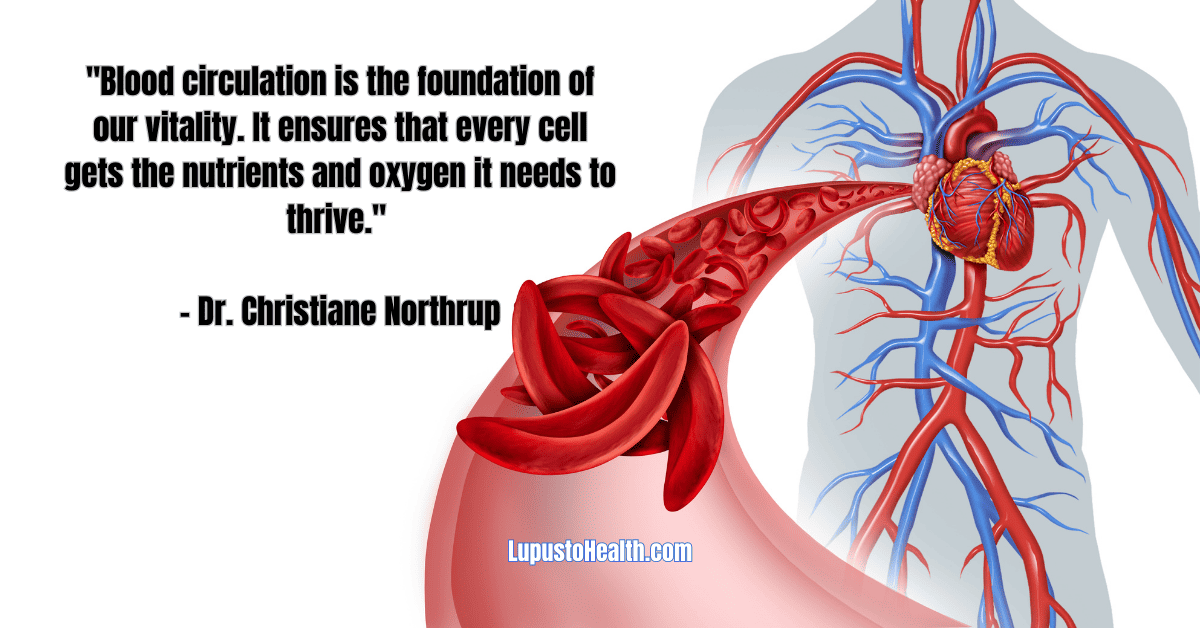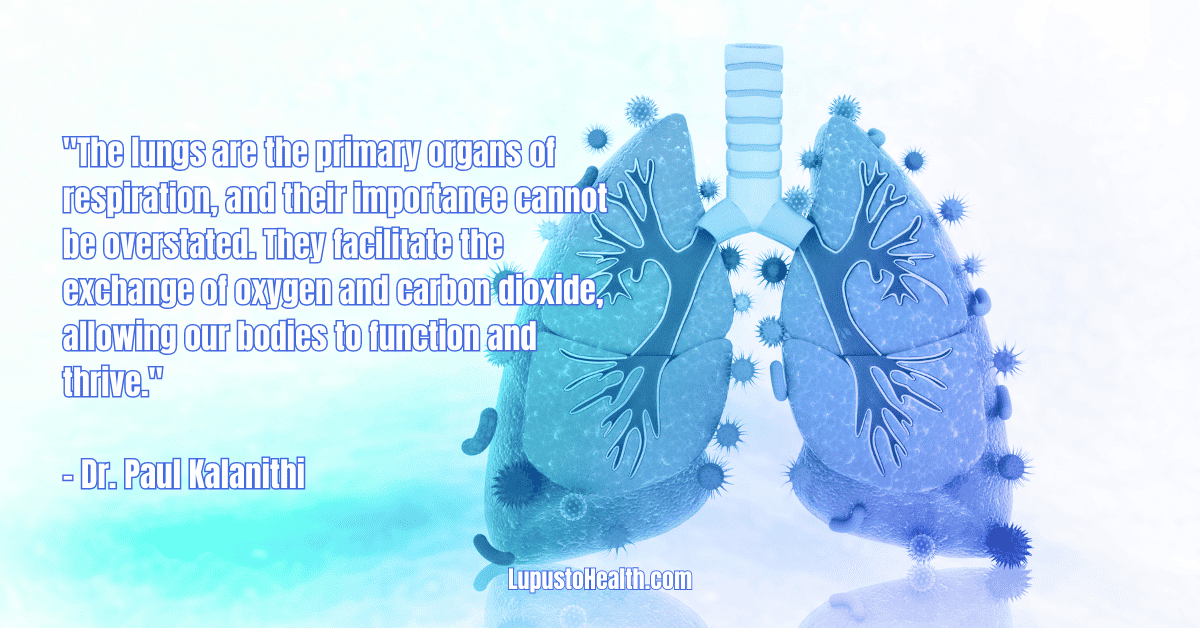Time is of the essence for people suffering from systemic lupus. Yet, this disease has a reputation for being difficult to diagnose. Let alone manage.
Lupus can affect many parts of the body, including the skin, joints, kidneys, lungs, and brain. For that reason, symptoms can vary.
What’s more, symptoms can mimic or be mistaken for other diseases. This is why lupus carries the label of being, “a great imitator.”
In this blog post, we will take a closer look at some of the most common symptoms of lupus. So, that you better understand this disease. From head to toe, we’ll explore 84 different ways that lupus can impact your health and well-being.
General Symptoms
“Constitutional symptoms” are common in systemic lupus. Yet, they are rather generic issues; Therefore, they are not taken into account when classifying the disease. [1]
These include
- Fatigue: This is the most common symptom seen in lupus patients. That is to feel tired or lack energy all the time. The disease itself can be caused by this. As can medications, lifestyle habits, or other conditions.
- Fever: Inflammation or infection in your body can cause a fever. In people with lupus, a fever may be a sign of a flare-up or complications of the disease.
- Weight changes: Some people may lose weight due to loss of appetite, malabsorption, or increased metabolism. Others may put weight on due to fluid retention or as a side effect of certain medications used to treat lupus.
To reiterate, these symptoms stem from other factors such as infection or drug fever.
What’s more, it’s difficult to diagnose these as lupus symptoms as they can mimic other diseases and disorders.
– Click here to learn how to fight fatigue as a lupus patient –

Brain and Nervous System
Anywhere from 6% to 91% of lupus patients may have ‘neuro-psychiatric’ issues. [2]
Examples of these include:
- Cerebrovascular disease: Systemic lupus can cause blood clots to form in the blood vessels of the brain, which can lead to stroke or other cerebrovascular complications.
- Cognitive impairment: This can include problems with memory, attention, and concentration.
- Headaches: These can be debilitating and can range from mild to severe in intensity.
- Myelitis: Inflammation of the spinal cord can cause weakness, numbness, and pain in the arms and legs.
- Neuropsychological symptoms: Some may have difficulty with attention, memory, and other cognitive abilities.
- Peripheral neuropathy: A type of nerve damage that can bring about numbness, tingling, and weakness in the limbs.
- Psychiatric symptoms: Such as Depression, anxiety, and psychosis.
- Seizures: Common with neuropsychiatric lupus (NPSLE), but can be a serious complication of the disease.
– Click here to learn how to navigate the mental challenges that lupus can bring –

Eyes
Ocular manifestations of systemic lupus refer to symptoms that affect the eyes. These can include: [3]
- Choroidopathy: Fluid builds up under the retina causing distorted, dim and blurred vision.
- Conjunctivitis: Inflammation of the conjunctiva – the clear membrane that covers the white part of the eye and the inside of the eyelids – creating redness, itching, and discharge.
- Episcleritis: A benign cause of red eye that can cause tearing, sensitivity to bright lights and a hot, prickly, or gritty sensation in the eye.
- Interstitial keratitis: Scaring due to chronic inflammation of the cornea – the window of the eye – that can affect your vision.
- Keratoconjunctivitis sicca: A common condition characterised by dry eyes, which can lead to discomfort, blurred vision, and light sensitivity.
- Optic neuritis: Inflammation of the optic nerve, which can lead to vision loss or blindness.
- Retinopathy: Lupus can cause damage to the retina, which again can lead to vision loss or blindness.
- Scleritis: Inflammation of the sclera, the white part of the eye, which can instigate pain, redness, and sensitivity to light.
- Uveitis: Irritation of the middle layer of the eye, which can bring about pain, redness, and blurred vision.
– Learn more here on what you need to know about systemic lupus and your eyes –

Hormones
‘Endocrine manifestations,’ as research papers say, relate to symptoms that affect the endocrine system. This is the system within your body that handles hormones, which regulate many of your body’s functions.
For instance, lupus patients have a higher chance of developing thyroid dysfunction than the general population. This could be due to the long-term use of glucocorticoids, which can suppress pituitary function. This is one reason it’s crucial to taper steroids over time. [4]
Hormonal issues for lupus patients can include:
- Addison’s disease: Inflammation of the adrenal glands, which inhibit hormones such as cortisol and aldosterone.
- Diabetes mellitus: Lupus can cause the immune system to attack the insulin-producing cells in the pancreas, leading to high blood sugar levels and diabetes.
- Hyperparathyroidism: When one or more of the parathyroid glands become overactive resulting in high levels of calcium. This can make you feel tired, sick, or even thirsty all the time.
- Hyperthyroidism: Overactivity of the thyroid gland, which can trigger symptoms such as weight loss, anxiety, and rapid heartbeat.
- Hypoglycaemia: Low blood sugar, which can set off symptoms such as shakiness, weakness, and confusion.
- Hypothyroidism: Underactivity of the thyroid gland, which can cause symptoms such as weight gain, fatigue, and cold intolerance.
- Ovarian failure: Systemic lupus can cause the ovaries to stop functioning. This can lead to amenorrhea, and other symptoms relating to oestrogen and progesterone deficiency such as hot flashes and vaginal dryness.
It is worth stating that low vitamin D levels (a hormone itself) can cause hyperparathyroidism. Worth considering when you think vitamin D deficiency is common in lupus patients partly due to avoidance of sun exposure.
– Learn more here on why vitamin D deficiency is common in people with lupus –

Heart
Cardiac manifestations of systemic lupus erythematosus (SLE) refer to symptoms that affect the heart and cardiovascular system. These symptoms can include: [5][6]
- Pericarditis: Swelling and irritation of the thin, saclike tissue surrounding the heart, which can cause sharp chest pain and shortness of breath.
- Myocarditis: This is inflammation of the heart muscle, which can cause chest pain, shortness of breath, and an irregular heartbeat.
- Valvular disease: When any valve in the heart has damage or is diseased, it can cause issues like a “leaky heart.” Symptoms to watch out for are fatigue, swelling and breathlessness.
- Atherosclerosis: Lupus patients are at a high risk of having clogged arteries. Thus, seeking medical help is important if you experience things like chest pain, shortness of breath, and/or cold sweats.
- Arrhythmias: Heart rhythm disturbances are among the most significant cardiac complications of lupus. Symptoms include palpitations, shortness of breath and even fainting.
- Cardiomyopathy: Lupus can cause damage to the heart muscle, which can lead to heart failure.
- Endocarditis: a life-threatening inflammation of the inner lining of the heart’s chambers and valves, which can cause a heart murmur, chest pain, and shortness of breath.
- Coronary artery disease: A narrowing of the arteries that supply the heart, which can lead to a heart attack.
- Hypertensive heart disease: High blood pressure can damage the heart and blood vessels, leading to heart failure.
– Click here to learn more about how lupus can affect your heart –

Circulation
Vascular manifestations of systemic lupus stand for symptoms that affect the blood vessels. Driven by complex interactions between immune cells, endothelial cells, autoantibodies, and immune complexes. [1][6]
Such symptoms can include:
- Vasculitis: Inflammation of the blood vessels, which can lead to problems such as blood clots, organ damage, and blood vessel narrowing.
- Raynaud’s phenomenon: A condition in which the blood vessels in the fingers and toes constrict in response to cold temperatures or stress. It can cause pain, numbness, and a change in skin colour in the affected areas.
- Thrombotic events: Lupus can cause blood clots to form in the blood vessels, which can lead to stroke, deep vein thrombosis (DVT), or pulmonary embolism.
- Hypertensive crisis: High blood pressure, which can lead to headaches, visual changes, and chest pain.
- Haemolytic anaemia: Lupus can cause the immune system to attack red blood cells, leading to a low red blood cell count, fatigue, and weakness.
- Coagulopathy: Abnormal blood clotting which can lead to excessive bleeding or clotting.
- Livedo reticularis: This looks like a skin issue but the mottled skin is the result of inflamed blood vessels.
Peripheral vascular disease has become an important cause of morbidity in lupus patients due to increasing longevity.
Blood/Blood supply
Due to an abnormal immune system, systemic lupus can affect your blood and blood-forming bone marrow.
Examples of such “hematologic” symptoms include: [7]
- Anaemia: A reduction in red blood cells due to lupus equals fatigue, weakness, and shortness of breath.
- Coagulopathy: Abnormal blood clotting can bring about excessive bleeding or clotting.
- Haemolytic anaemia: Lupus can cause the immune system to attack red blood cells, leading to a low red blood cell count, fatigue, and weakness.
- Leukopenia: A drop in white blood cells due to the disease can raise your risk of infection.
- Lupus anticoagulant: An autoantibody that can cause abnormal blood clotting and increase the risk of blood clots.
- Lymphadenopathy: Inflammation of the lymph nodes can make them swollen and painful.
- Thrombocytopenia: A reduction in platelets can make you bleed or bruise more easily.
– Click here to learn if lupus could be a blood disorder –

Lungs
At some time during their disease, most lupus patients show signs of lung issues. What’s more, “Pulmonary manifestations” can come on slowly or even come and go. [8]
They represent a collection of complications like:
- Pleurisy: Inflammation of the pleura, which is the lining around the lungs, can cause chest pain, shortness of breath, and a dry cough.
- Interstitial lung disease: Lupus can cause inflammation and scarring in the lungs, which can lead to difficulty breathing, a dry cough, and chest pain.
- Pulmonary hypertension: High blood pressure in the lung’s arteries can lead to shortness of breath, fatigue, and chest pain.
- Pulmonary embolism: Blood clots can form in the lungs, which can cause shortness of breath, chest pain, and a rapid heart rate.
- Alveolar haemorrhage: This is a rare complication that causes bleeding in the air sacs of the lungs, which can lead to a cough, shortness of breath, and chest pain.
- Pleural effusion: Fluid can build up in the pleural cavity thanks to lupus, which can lead to difficulty breathing and chest pain.
– Click here to learn the dangers of dust that you did not know –

Kidneys
Kidneys are the most common internal organ that lupus damages.
Although not all people with lupus develop clear ‘renal’ disease, biopsy studies do show almost all lupus patients have some degree of kidney problems.
Your kidneys have tiny filters called “glomeruli.” This allows your kidneys to filter toxins out of your blood and remove them through your toilet trips.
“Glomerular disease” refers to you having faulty filters: either via inflammation or scarring. It is typical for this disorder to develop within the first few years. Yet it does not always cause symptoms. Still, if you have lupus – or think you might – signs to look out for are: [1]
- Foamy, or bubbly urine – due to high levels of protein
- Pink, or cola-coloured urine – from red blood cells
- High blood pressure
- Swelling in your face, hands, ankles or feet… known as Oedema
Such symptoms can be signs that you have: [9]
- Lupus Nephritis: A specific type of nephritis to lupus, in which the immune system attacks the kidney’s filtering units.
- Membranous nephropathy: a condition in which the immune system forms immune complexes that deposit in the kidneys, causing inflammation and eventually leading to kidney damage.
- Thrombotic microangiopathy: formation of small blood clots in the small blood vessels of the kidneys.
- Nephrotic syndrome: a group of symptoms that include a high level of protein in the urine, low levels of protein in the blood, and swelling in the body.
Kidney failure and sepsis are the main causes of death in lupus patients.
– Click here to learn 5 top tips to make every meal kidney-friendly –

Skin
Here’s a titbit for you: Lupus was first recognised as a skin condition in the mid-1800s.
“Cutaneous manifestations” of systemic lupus include four diagnostic criteria and many other clues to a potential diagnosis of lupus. [10]
These include:
- Butterfly rash: Also known as a malar rash, this is a distinctive red or purple rash that appears on the cheeks and bridge of the nose, resembling the shape of butterfly wings.
- Photosensitivity: This refers to an increased sensitivity to sunlight, which can lead to rashes, sunburns, or skin discolouration.
- Discoid lupus: This is a chronic form of cutaneous lupus that causes scaly, round patches of skin discolouration and inflammation on the face, scalp, and elsewhere.
- Alopecia: Lupus can cause hair loss, which can range from patchy to complete baldness.
- Subacute cutaneous lupus: This form of cutaneous lupus causes annular (ring-shaped) rashes on the skin, often accompanied by scaling and/or atrophy.
- Lupus panniculitis: This is a rare form of cutaneous lupus that causes small, firm, red or purple nodules on the skin, particularly on the face, upper arms, and legs.
- Lupus profundus: This is a rare form of subcutaneous lupus that causes deep, painful nodules in the fat and muscle layers of the skin.
– Learn how to take control of your dry skin with lupus –

Digestive System
Gastrointestinal symptoms such as abdominal pain, nausea and dyspepsia are common in lupus patients. These issues could be due to the disease itself, independent gastrointestinal disorders or complications of therapy.
Still, systemic lupus can affect the digestive system – including the stomach and intestines. [11]
Examples include:
- Abdominal pain: Lupus can irritate the stomach or intestines, leading to discomfort or pain in the abdominal area.
- Nausea and vomiting: Inflammation or other problems in the stomach or intestines may bring about such issues.
- Diarrhoea: The inflammation lupus may create in the intestines can set off bowel problems or diarrhoea.
- Mouth ulcers: Lupus can cause sores or ulcers in the mouth, which can be painful and make it difficult to eat or drink.
- Liver dysfunction: Inflammation in the liver can lead to problems with liver function, such as jaundice.
- Pancreatitis: Lupus can also affect the pancreas, triggering abdominal pain, nausea and vomiting.
– Learn 3 Things You Need to Know about Your Gut Bacteria and Lupus –
Reproductive system
Pregnancy outcomes are often worse for systemic lupus patients.
“Obstetric” problems of lupus refer to symptoms that affect pregnancy and childbirth, such as: [12]
- Recurrent miscarriages: Autoantibodies can increase the risk of recurrent miscarriages, which are defined as two or more consecutive pregnancy losses.
- Premature delivery: Lupus can raise the risk of premature delivery, which is to give birth before 37 weeks of pregnancy.
- Intrauterine growth restriction: The foetus can grow at a slower rate than normal, which can lead to problems such as low birth weight.
- Neonatal lupus: In some cases, systemic lupus can affect the newborn, causing symptoms such as a rash, low blood cell counts, or heart block.
- Preeclampsia: This is a serious pregnancy complication characterised by high blood pressure and protein in the urine.
- Congenital heart block: Lupus can also cause congenital heart block, which is a rare condition triggering a slow or blocked electrical signal between the atria and ventricles of the heart in the foetus.
The best approach is to time your pregnancy when your lupus is in remission. What’s more, 2% of babies born to mothers with systemic lupus may have neonatal lupus due to maternal antibodies crossing the placenta. [13]

Bones and Joints
Did you know that having a strong grip is a sign of being healthy? [14] It seems that many people with lupus, a disease that affects the body, often have weak grip strength no matter how active their disease is. One of the reasons for this is joint pain, especially when it affects many joints. This can make it difficult to do regular tasks and can have a bad effect on their work, relationships, and overall quality of life. [15] It’s a concern because many people with lupus also have problems with their bones or joints, like:
- Arthritis: This refers to inflammation of the joints, which can cause pain, stiffness, and swelling. Lupus-related arthritis can affect multiple joints in the body.
- Osteoporosis: Lupus patients are at a higher risk of developing osteoporosis, a condition characterised by weakened bones that are more prone to fractures.
- Avascular necrosis: This condition occurs when the blood supply to a bone is disrupted, leading to bone tissue death. Lupus patients may be more susceptible to avascular necrosis, particularly in the hip joint.
- Myositis: Lupus can also affect the muscles, leading to inflammation and weakness. Myositis can cause muscle pain, fatigue, and difficulty with movement.
- Lupus-related joint damage: Over time, chronic inflammation in the joints can result in joint damage and deformities. This can cause long-term issues with mobility and functionality.
Final Thoughts
Systemic Lupus is a chronic autoimmune disease that affects various parts of the body, including the skin, joints, kidneys, and blood. It causes a wide range of symptoms that can come and go and can range from mild to severe.
Lupus characteristics of higher autoantibodies that attack the body’s cells can lead to serious organ damage. Making it a challenging disease to manage, which can be fatal in some cases.
It is important to note that these symptoms can also be caused by other factors, such as medications or other medical conditions. Please consult with a healthcare professional if you are experiencing any of these symptoms, to determine the cause and appropriate treatment.
I would love to know your thoughts. Feel free to drop a comment below or contact me.
If you like this article, check out my other articles here.